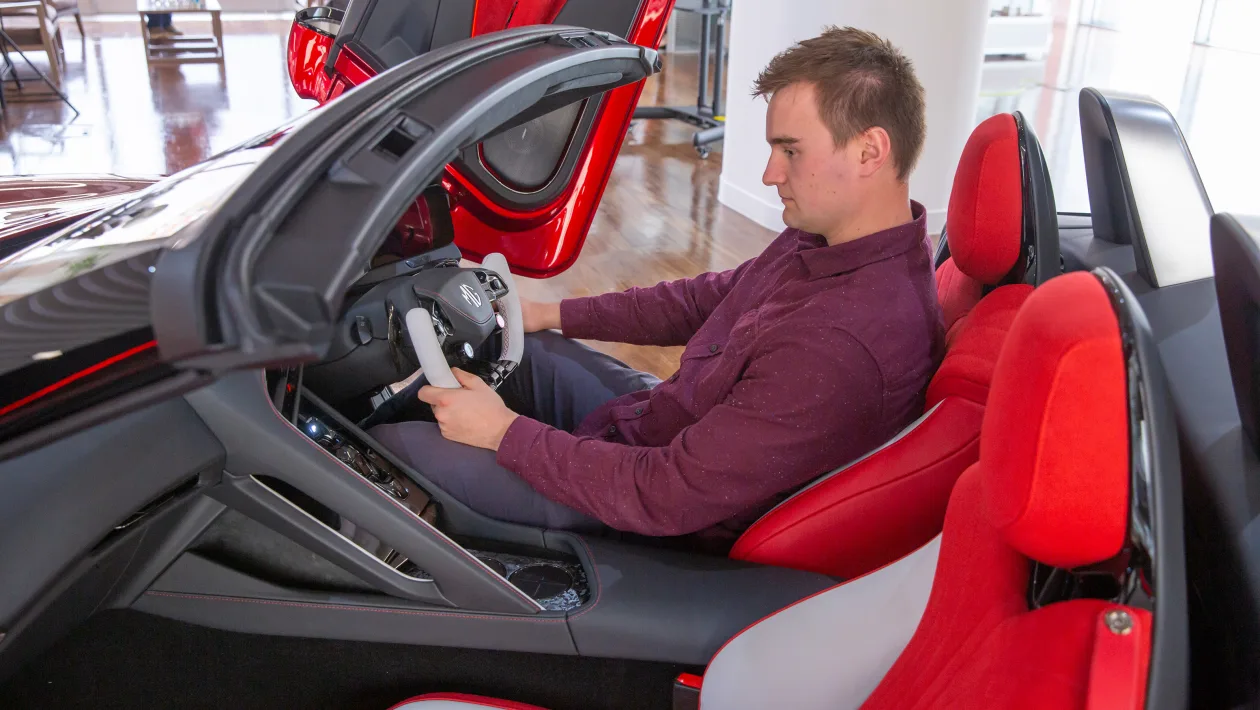Our colleagues in the UK get the first walkaround of a right-hand drive MG Cyberster and gather details such as the likely starting price.
MG, the British sports car marque acquired by Chinese owner SAIC soon after Longbridge-based MG Rover collapsed in 2005, has taken a giant step towards reconnecting the marque with its century-old roots by staging a London unveiling for its Cyberster fully electric sports roadster, due in showrooms next year and confirmed for Australia.
The car, launched as a near-production concept last month at the Shanghai motor show, is the first all-new sports roadster to carry the iconic octagonal MG badge since the MG F in 1995.
MG claims it will be the world’s first “affordable” EV roadster, dramatically undercutting existing electric performance cars. Talking with our collegues in the UK, the price will start from around £50,000 (AUD$93,000) for a rear-wheel-drive 230kW version and stretch to around £60-65,000 (AUD$112-120,000) for an all-wheel-drive, twin-motor version with 400kW.
While those prices seem high, the entry-point is roughly just under double the price of the MG ZS EV in the UK. That model is priced from $45k in Australia so we could expect the Cyberster roadster to be priced from under $90,000 here.
Although the car was originally planned as a replacement for the MG TF (a developed version of the MG F), the need to carry a large traction battery and the consequent requirement for a long wheelbase has made the Cyberster closer in its major dimensions to the 4.4m-long BMW Z4 than its 3.96m mid-engined predecessor.
Little has been confirmed about the Cyberster’s mechanical layout ahead of its official Goodwood Festival of Speed launch, but the lighter single-motor model is understood to tip the scales at around 1850kg – 750kg more than the MG TF. The twin-motor model is expected to add 135kg.
The new EV roadster, which for the time being will be built only as an open-two-seater with an electric-powered folding roof, has a wide and spacious cabin, helped by the lack of engine in the nose. The batteries are located in the chassis on a ‘skateboard’ principle.
Like the Cyberster’s exterior, the interior designs have their roots in MG’s London-based advanced studio. The plush fascia and instrumentation take influence from contemporary gaming trends and scissor doors provide what designers call “a sense of theatre”.
MG design director Carl Gotham, leader of the brand’s 20-strong advanced design group based in London’s Marylebone, acknowledges the size growth but believes the car wears it well, “creating a completely new kind of roadster ready for a new generation of sports car drivers”.
He cites the Cyberster’s main aim as being to lead the design style of future MG models. MG will continue its concentration on SUV and wagons, but this will not be its only sports car.
MG UK commercial director Guy Pigounakis says the company has already been “inundated” with requests from potential buyers.
Pigounakis cites great value for money and excellent new car distribution as important elements in MG’s success but reckons brand recognition is a “critical” part. And response to the cars from older buyers is “absolutely phenomenal”. He said: “It’s clear there’s a large and active group of buyers who remember the excitement and the promise of the MG name and have a huge amount of affection for it.”









